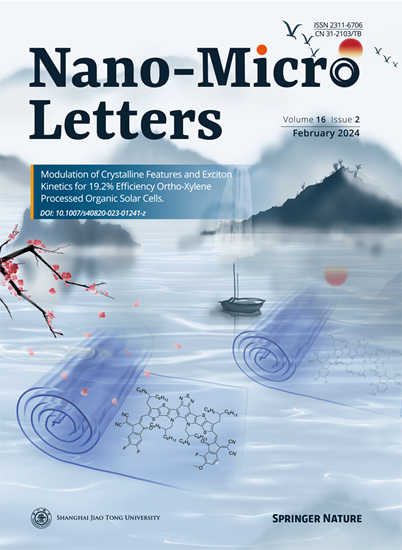Optimizing Exciton and Charge-Carrier Behavior in Thick-Film Organic Photovoltaics: A Comprehensive Review.
IF 26.6
1区 材料科学
Q1 Engineering
引用次数: 0
Abstract
Organic photovoltaics (OPVs) have achieved remarkable progress, with laboratory-scale single-junction devices now demonstrating power conversion efficiencies (PCEs) exceeding 20%. However, these efficiencies are highly dependent on the thickness of the photoactive layer, which is typically around 100 nm. This sensitivity poses a challenge for industrial-scale fabrication. Achieving high PCEs in thick-film OPVs is therefore essential. This review systematically examines recent advancements in thick-film OPVs, focusing on the fundamental mechanisms that lead to efficiency loss and strategies to enhance performance. We provide a comprehensive analysis spanning the complete photovoltaic process chain: from initial exciton generation and diffusion dynamics, through dissociation mechanisms, to subsequent charge-carrier transport, balance optimization, and final collection efficiency. Particular emphasis is placed on cutting-edge solutions in molecular engineering and device architecture optimization. By synthesizing these interdisciplinary approaches and investigating the potential contributions in stability, cost, and machine learning aspects, this work establishes comprehensive guidelines for designing high-performance OPVs devices with minimal thickness dependence, ultimately aiming to bridge the gap between laboratory achievements and industrial manufacturing requirements.优化厚膜有机光伏中的激子和载流子行为:综述。
有机光伏(opv)已经取得了显着的进展,实验室规模的单结设备现在显示功率转换效率(pce)超过20%。然而,这些效率高度依赖于光活性层的厚度,通常在100纳米左右。这种敏感性对工业规模的制造提出了挑战。因此,在厚膜opv中实现高pce是必不可少的。这篇综述系统地研究了厚膜opv的最新进展,重点是导致效率损失的基本机制和提高性能的策略。我们提供了一个全面的分析,涵盖整个光伏工艺链:从最初的激子产生和扩散动力学,通过解离机制,到随后的电荷载流子传输,平衡优化和最终的收集效率。特别强调的是分子工程和设备架构优化的尖端解决方案。通过综合这些跨学科的方法,并研究在稳定性、成本和机器学习方面的潜在贡献,本研究为设计具有最小厚度依赖性的高性能opv器件建立了全面的指导方针,最终旨在弥合实验室成果与工业制造需求之间的差距。
本文章由计算机程序翻译,如有差异,请以英文原文为准。
求助全文
约1分钟内获得全文
求助全文
来源期刊

Nano-Micro Letters
NANOSCIENCE & NANOTECHNOLOGY-MATERIALS SCIENCE, MULTIDISCIPLINARY
CiteScore
32.60
自引率
4.90%
发文量
981
审稿时长
1.1 months
期刊介绍:
Nano-Micro Letters is a peer-reviewed, international, interdisciplinary, and open-access journal published under the SpringerOpen brand.
Nano-Micro Letters focuses on the science, experiments, engineering, technologies, and applications of nano- or microscale structures and systems in various fields such as physics, chemistry, biology, material science, and pharmacy.It also explores the expanding interfaces between these fields.
Nano-Micro Letters particularly emphasizes the bottom-up approach in the length scale from nano to micro. This approach is crucial for achieving industrial applications in nanotechnology, as it involves the assembly, modification, and control of nanostructures on a microscale.
 求助内容:
求助内容: 应助结果提醒方式:
应助结果提醒方式:


